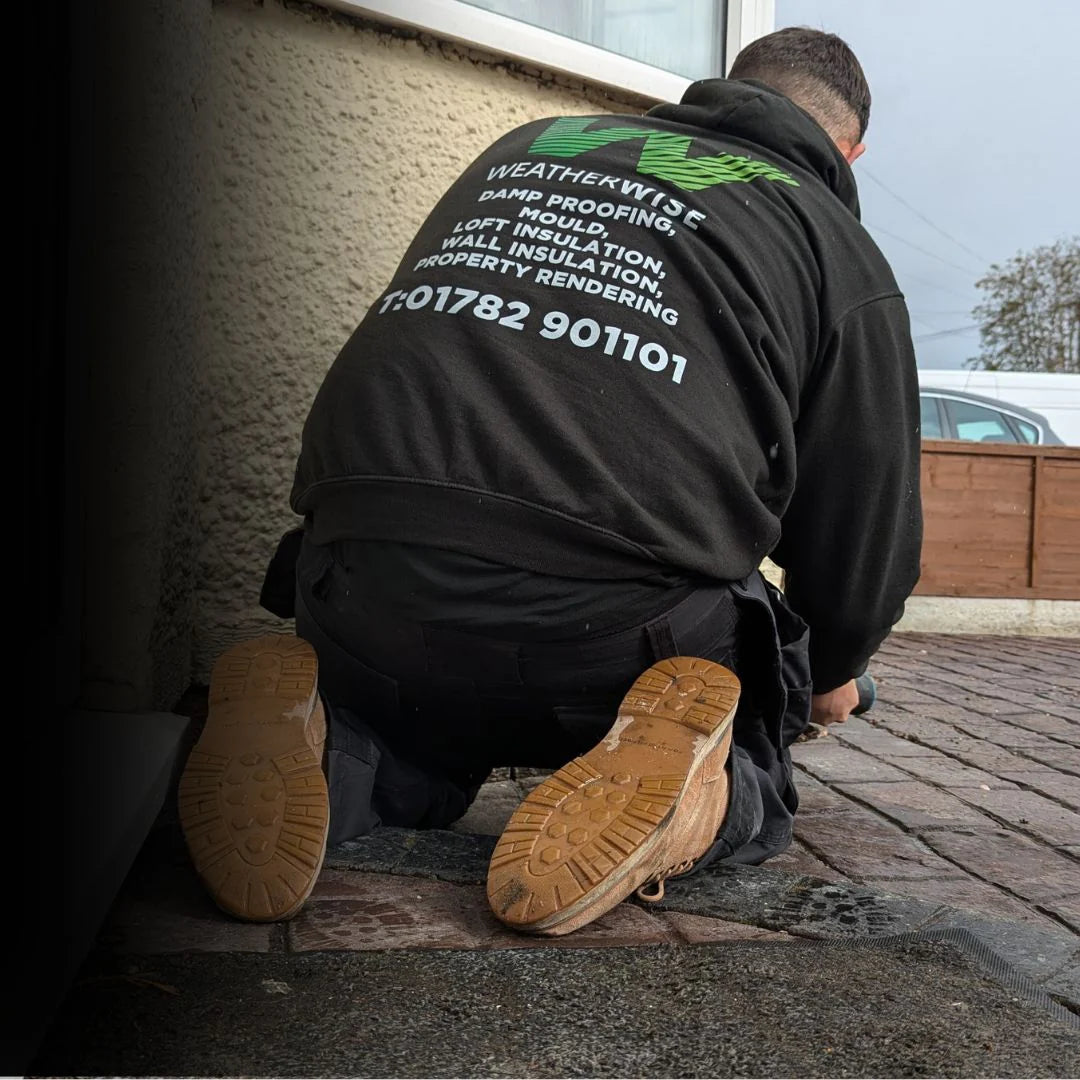Dry Rot vs Wet Rot: What’s Causing Floor Damage in Chester?
Noticing bouncy floors, musty smells, or timber discolouration in your Chester home? These symptoms could point to one of two serious issues: dry rot or wet rot. Both forms of fungal decay can compromise structural timbers — especially in older properties across Hoole, Handbridge and Boughton.
But knowing which type you’re dealing with is key to fixing it properly and preventing future damage.
What Is the Difference Between Dry Rot and Wet Rot?
While both problems stem from moisture and timber decay, they behave very differently:
Wet Rot
-
Caused by consistent, high moisture levels (usually >20%)
-
Limited to the damp area only
-
Wood appears darker, cracked, or soft to the touch
-
Often found near plumbing leaks, air bricks, or external walls
-
Does not spread aggressively
Dry Rot (Serpula lacrymans)
-
Occurs when moisture levels are high enough to trigger fungal spores (usually 20–30%)
-
Spreads aggressively across walls, floors and behind plaster
-
Timber becomes dry, brittle, and breaks into cubes
-
May have orange fruiting bodies and cotton wool–like mycelium
-
Can survive in hidden voids and travel several metres from source
How to Tell What’s Causing Floor Damage
If you're in Chester and you’ve noticed issues in suspended timber floors, check for these signs:
-
Musty or mushroom-like smell
-
Timber breaking into cubes or cracking deeply
-
Damp, soft joists or skirting boards
-
Visible fungus or white/grey fuzz under flooring
-
Brickwork discolouration or rusted fixings
Still unsure? Book a professional timber survey — our team will diagnose it correctly with moisture readings, boroscope inspections and timber sampling if needed.
Treatment for Wet Rot
At Weather Wise Solutions, wet rot treatment involves:
-
Removing the source of moisture (e.g. improving ventilation, fixing leaks or installing DPC)
-
Removing and replacing severely decayed timber
-
Treating retained wood with fungicidal solution
-
Improving airflow in subfloors to prevent reoccurrence
📌 We use proven wet rot treatments and preservatives from PAM Ties: https://pamties.co.uk/product-category/damp/damp-proofing-damp/
Treatment for Dry Rot
Dry rot requires more extensive intervention:
-
Locate and remove all affected timber, plaster, and nearby masonry
-
Apply deep-penetrating fungicides to timber and surrounding brick
-
Replace structural elements with treated timber
-
Use high-performance ventilation or passive air systems to keep areas dry
Preserve Your Chester Property with Certified Experts
Weather Wise Solutions is proud to be a CPD-certified contractor and a member of both the Federation of Damp and the Damp Proofing Association.
📌 Learn more about our accreditations here: https://www.dampproofingassociation.co.uk/
We’ve treated timber decay in period homes, listed buildings and terraced properties across Chester — including Upton, Handbridge, Lache and Vicars Cross.
Book a Free Timber Floor Survey in Chester
Don’t let hidden fungal decay weaken your floor joists or spread throughout your home. Whether it’s wet rot, dry rot — or something else — we’ll get to the root of the issue.
📌 Book a Free Survey for your Home here: https://weatherwiseuk.co.uk/pages/contact
Let’s preserve your property the right way — with real answers, not guesswork.



